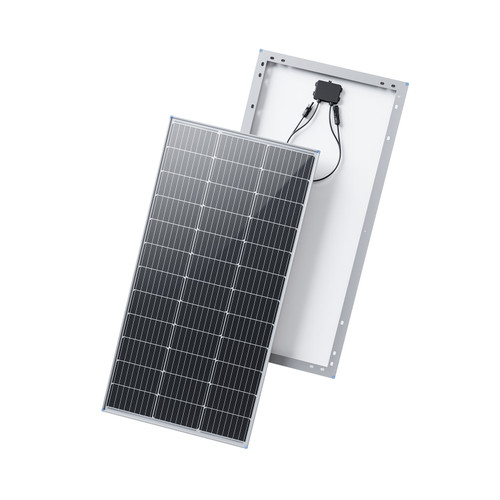SlickWIlly
New Member
Hi All,
I've found these forums very useful, Will's videos have been great as well.
I wanted to post the system I'm in the process of building to see if I'm making any terrible mistakes.
The objective is to have a semi-portable build that will spend most of its time powering a home office in the backyard. Basically using system for backup power, may install in a remote cabin later. Kind of a hobby build to gain experience, and have back up power if the grid goes down. Might eventually install in a camper van if my wife lets me buy one...
Not going to tie into grid, but will use a budget all in one hybrid inverter:

 powmr.com
powmr.com
I have a 12V 100ah SOK heated lifepo4:

 www.europe.sokbattery.com
www.europe.sokbattery.com
Also picked up 4 Renogy 100W panels on sale:

 www.renogy.com
www.renogy.com
Getting ready to put it all together and wondering about wire and fuse sizing.
If the inverter has 1500W capacity that would draw 125 amps, but I assume that would trip the max current out on the SOK BMS. Should I limit the fuse/breaker on the positive side to 100amps or below? If yes, then I assume a breaker would be preferable to a fuse as I might accidently run up on this limit powering the loads in the office (few lights around 100W, 500W video editing rig, starlink).
If I go with 50mm2 (awg 0) cable from battery to inverter/charger unti that should be large enough, I think
The AC charger seems to be able to push 80 amps into the battery, any concerns there if I use a 16 amp extension cord for AC in to inveter/charger? Idem for 50mm2 cable to battery for charging.
Lastly, the min V into the MPPT is 90V, each panel is rated to 24.3V Vo, if I put them in series will I have enought Volts in the real world? Not sure if I'll acheive the min voltage or need to add a panel or two?
Thanks for any input!
I've found these forums very useful, Will's videos have been great as well.
I wanted to post the system I'm in the process of building to see if I'm making any terrible mistakes.
The objective is to have a semi-portable build that will spend most of its time powering a home office in the backyard. Basically using system for backup power, may install in a remote cabin later. Kind of a hobby build to gain experience, and have back up power if the grid goes down. Might eventually install in a camper van if my wife lets me buy one...
Not going to tie into grid, but will use a budget all in one hybrid inverter:

1600Watt 220Vac 12Vdc All In One Inverter Charger
This pure sine wave inverter combines functions of 1600Watt 220Vac 12Vdc pure sine wave inverter and 80Amps charge controller for most battery types.
 powmr.com
powmr.com
I have a 12V 100ah SOK heated lifepo4:

SOK 12V100Ah LiFePO4 Battery Bluetooth&Built-in heater | SOK Battery Europe
EU - In stock!!!Dispatched within 1 Working Day. Shipping time 5-8 working days.UK -In stock!!! Dispatched within 1 Working Day. Shipping time 3-5 working days. Latest V8 version Bluetooth BMS.SK12V100H designed for cold weather using! Can safely charge at temperatures down to -20°C (-4°F) by a...
 www.europe.sokbattery.com
www.europe.sokbattery.com
Also picked up 4 Renogy 100W panels on sale:

100 Watt 12 Volt Monocrystalline Solar Panel (Compact Design)
Renogy 100 watt monocrystalline solar panel, rv solar panel, off-grid solar panel for sale. Limited time sale, 10% off: Renogy10off
 www.renogy.com
www.renogy.com
Getting ready to put it all together and wondering about wire and fuse sizing.
If the inverter has 1500W capacity that would draw 125 amps, but I assume that would trip the max current out on the SOK BMS. Should I limit the fuse/breaker on the positive side to 100amps or below? If yes, then I assume a breaker would be preferable to a fuse as I might accidently run up on this limit powering the loads in the office (few lights around 100W, 500W video editing rig, starlink).
If I go with 50mm2 (awg 0) cable from battery to inverter/charger unti that should be large enough, I think
The AC charger seems to be able to push 80 amps into the battery, any concerns there if I use a 16 amp extension cord for AC in to inveter/charger? Idem for 50mm2 cable to battery for charging.
Lastly, the min V into the MPPT is 90V, each panel is rated to 24.3V Vo, if I put them in series will I have enought Volts in the real world? Not sure if I'll acheive the min voltage or need to add a panel or two?
Thanks for any input!
Last edited:




